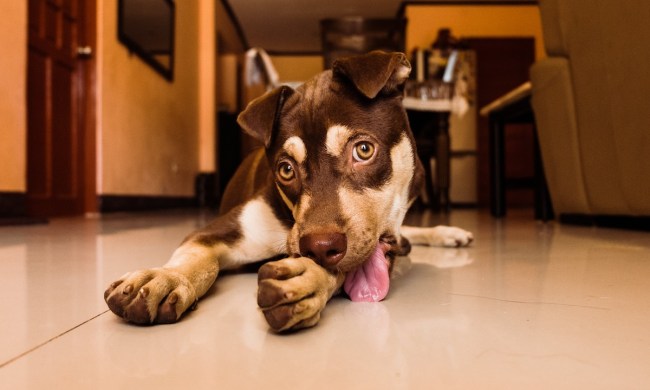There are plenty of benefits to a slow feeder dog bowl. Most importantly, it will slow down how fast your dog eats, which will improve digestion and help prevent bloating. It can also be a fun and interesting way for your dog to be entertained during mealtime.
These dog bowls are specially designed to slow down your dog’s eating habits. They include mazes and obstacles that make it harder for your pet to simply dive in and gobble up mouthfuls of food. The most common bowls feature large protrusions or walls that create shapes that dogs must work around to reach the food at the bottom of the bowl. These dog bowls also will improve your pet’s digestion and help prevent bloating.
Outward Hound Fun Feeder Dog Bowl
Best Overall

The Outward Hound Fun Feeder Dog Bowl is our top choice in feeder bowls for your dog. Made from food-safe materials, the bowl features a slip-resistant base to prevent sliding and food spillage. The ridges and valleys inside the bowl create a stimulating field to explore and dig through as your furry friend enjoys mealtime.
JASGOOD Slow-Feeder Pet Bowl
Best Durability

The JASGOOD Slow-Feeder Pet Bowl is durable and easily slows your dog’s eating while also withstanding any movements that could make it break under regular pressure. Made of strong plastic, the bowl is full of ridges that promote a playful way for your dog to find and nibble on their kibble. This bowl works great for dry food, wet food, and even as a water bowl.
UPSKY Slow-Feeder Dog Bowl
Easiest to Clean

The ridges and valleys of a slow feeder dog bowl may seem daunting to clean, but there’s good news. The UPSKY Slow-Feeder Dog Bowl helps ease that problem. The gaps between the raised parts are not too high or too narrow so it still gives your dog a fair chance at getting food without straining. The bowl’s polypropylene coating will also help you clean between the ridges without the frustration of tight spaces and corners.
Taking care of your furry friend sometimes means getting equipment that will help them out. They may not be able to say thank you for the slow feeder dog bowl, but you’ll have the satisfaction of knowing you’re helping them lead healthier and happier lives.



